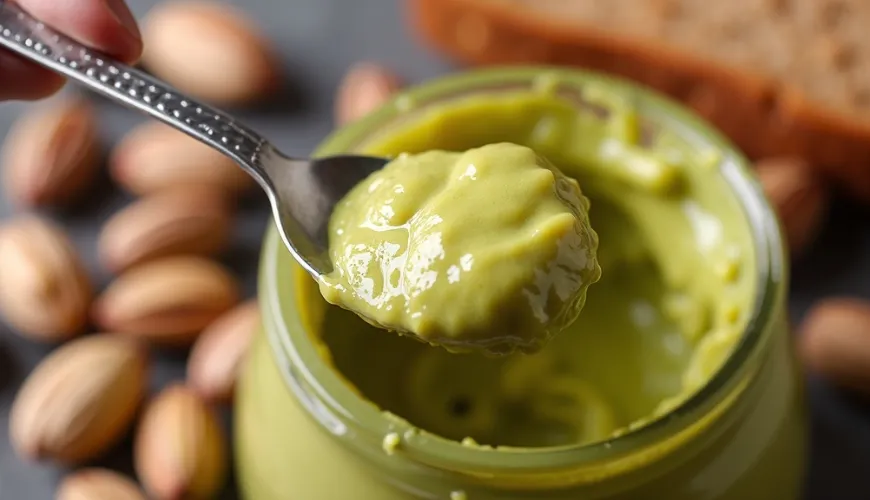
How to Make Butter from Quality Cream for a Unique Taste

Homemade Butter - A Return to Roots and an Irreplaceable Taste
In recent years, we are witnessing an interesting phenomenon – people are increasingly returning to tried-and-true traditions, not only in the realm of food. In a time when everything is available at the push of a button at the supermarket or online, more of us are asking: what if I made some things myself? One of the surprisingly simple and satisfying projects is making your own butter. Whether you're interested in how to make classic butter from milk, or you're craving something more original like pistachio butter, making butter at home is not only easy but also extremely delicious.
While whipping cream into butter was a common household activity just a few decades ago, today it's considered almost a culinary specialty. Yet, it requires no special equipment – just a bit of patience, quality ingredients, and a desire to discover something that has deep roots in our traditions.
How to Make Butter at Home
Making butter at home starts with the basic ingredient – cream. The best results come from cream with a higher fat content (at least 35%). The better the cream, the tastier the butter you'll get. For a perfect result, we recommend using cream from organic milk, which can be found at farmers' markets or specialty stores.
The process itself is simple – just whip the cream. Sounds almost too simple? Perhaps, but the magic happens when the whipped cream starts to separate: the solid part becomes butter, the liquid part buttermilk. Ideally, you'll use a mixer, whisk, or kitchen robot, but it can also be done by hand – the satisfaction from the result will be all the greater.
Once the butter separates, it's important to thoroughly wash it in cold water to remove any remaining buttermilk – these could cause the butter to spoil faster. Then shape the butter, maybe into a block or a roll, and store it in the fridge for a few days.
How to Make Butter from Milk?
This version is somewhat more challenging because you need to separate the cream from whole milk first. If you have access to fresh unpasteurized milk (for example, from a local farmer), simply let it sit in the fridge for 12–24 hours. The fat will rise to the top and form a creamy layer, which you can easily skim off with a spoon or ladle. This method is as old as time and is gaining popularity again – not just for the taste but also for ecological reasons.
When we think about how to make butter from milk at home, we can't help but remember grandmothers who knew exactly how to do it. Their experiences were passed down orally, often without precise recipes – just "by eye." Today's homemade butter has the advantage that we can adjust its taste to our liking – add salt, herbs, or even honey for a sweet variant.
Pistachio Butter – A Creamy Treasure Without Milk
While classic butter is animal-based, more and more people are looking for plant-based alternatives – and here's where nut butters come in. Among the most popular and luxurious options is pistachio butter. Its taste is gentle, yet pronounced and incredibly addictive. And the good news? You can make pistachio butter at home too.
The base is unsalted and unroasted pistachios – ideally peeled. First, lightly roast them in the oven (about 10 minutes at 160 °C) to enhance their flavor and make the butter creamier. Then blend the pistachios in a powerful mixer – initially, it will form a powder, but continued blending will release oils and the mixture will gain a smooth consistency.
You can flavor the resulting butter with a pinch of salt, a drop of vanilla extract, or even a bit of honey. Its uses are wide-ranging – from spreading on bread, to adding to smoothies, to making desserts.
Pistachio butter is also a great choice for those who do not want or cannot consume classic dairy products. Plus, if you make it at home, it will be cheaper than the luxury jars from the store.
Why Make Butter at Home?
You might be asking – why invest time and energy into something that costs just a few bucks at the store? The answer is simple – because the resulting taste, freshness, and knowing what you're eating are priceless. Homemade butter contains no preservatives, colorings, or unnecessary additives. Plus, you can customize it to your preferences – from salty to herbal to sweet variations.
Just as many of us have started baking homemade bread, sourdough rolls, or fermenting vegetables, making butter is a return to roots that makes sense. It offers not only a taste experience but also the joy of creating something yourself and having greater control over what we eat.
An example is Mrs. Lenka from Olomouc, who started experimenting with healthier food during the pandemic. "I tried making butter at home because I had leftover cream. I was surprised at how easy it is – since then, I haven't bought store-bought butter. Plus, I add fresh herbs from the garden, and it's a completely different level of taste," she says with a smile.
A Brief Overview of What You Can Make at Home:
- Classic butter from cream
- Herbal butter with chives, garlic, or dill
- Sweet butter with honey and cinnamon
- Pistachio butter – as a plant-based alternative
- Peanut or almond butter – for fans of protein spreads
No matter which variant you choose, one thing is certain – homemade butter will teach you to appreciate flavors more intensely. It may even prompt you to think about the origin of food and the journey it takes before it reaches our table.
In today's hectic times, making butter at home can become a small ritual of slowing down. It's not just about the product, but also about the process – a moment to realize that simple things are often the best. And that what is created with care and joy always tastes the best.

